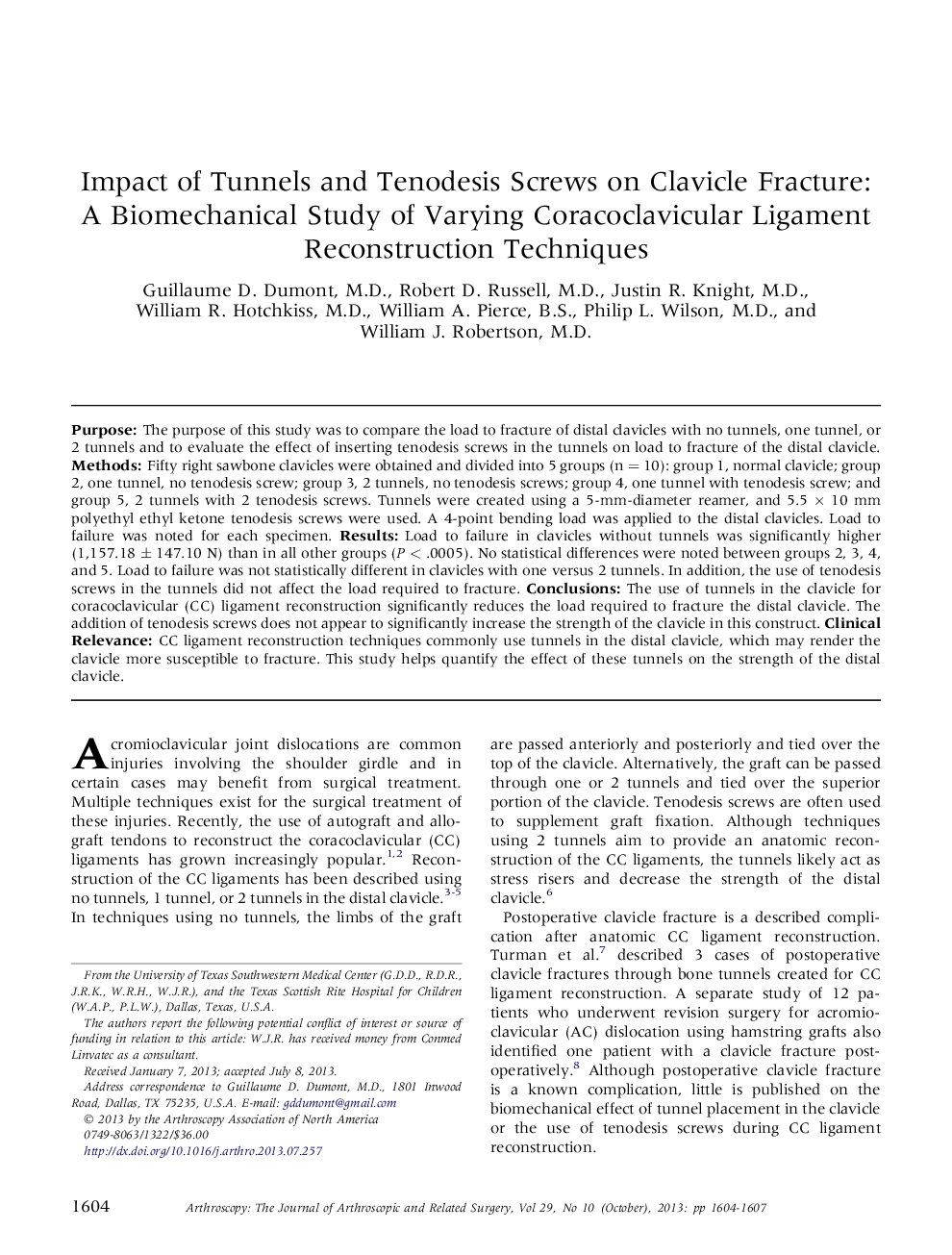| کد مقاله | کد نشریه | سال انتشار | مقاله انگلیسی | نسخه تمام متن |
|---|---|---|---|---|
| 4043044 | 1603505 | 2013 | 4 صفحه PDF | دانلود رایگان |

PurposeThe purpose of this study was to compare the load to fracture of distal clavicles with no tunnels, one tunnel, or 2 tunnels and to evaluate the effect of inserting tenodesis screws in the tunnels on load to fracture of the distal clavicle.MethodsFifty right sawbone clavicles were obtained and divided into 5 groups (n = 10): group 1, normal clavicle; group 2, one tunnel, no tenodesis screw; group 3, 2 tunnels, no tenodesis screws; group 4, one tunnel with tenodesis screw; and group 5, 2 tunnels with 2 tenodesis screws. Tunnels were created using a 5-mm-diameter reamer, and 5.5 × 10 mm polyethyl ethyl ketone tenodesis screws were used. A 4-point bending load was applied to the distal clavicles. Load to failure was noted for each specimen.ResultsLoad to failure in clavicles without tunnels was significantly higher (1,157.18 ± 147.10 N) than in all other groups (P < .0005). No statistical differences were noted between groups 2, 3, 4, and 5. Load to failure was not statistically different in clavicles with one versus 2 tunnels. In addition, the use of tenodesis screws in the tunnels did not affect the load required to fracture.ConclusionsThe use of tunnels in the clavicle for coracoclavicular (CC) ligament reconstruction significantly reduces the load required to fracture the distal clavicle. The addition of tenodesis screws does not appear to significantly increase the strength of the clavicle in this construct.Clinical RelevanceCC ligament reconstruction techniques commonly use tunnels in the distal clavicle, which may render the clavicle more susceptible to fracture. This study helps quantify the effect of these tunnels on the strength of the distal clavicle.
Journal: Arthroscopy: The Journal of Arthroscopic & Related Surgery - Volume 29, Issue 10, October 2013, Pages 1604–1607